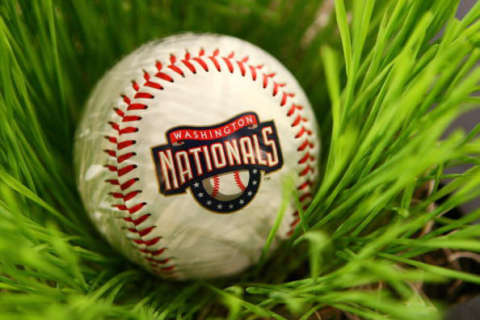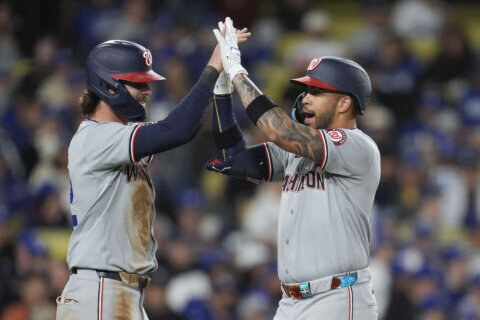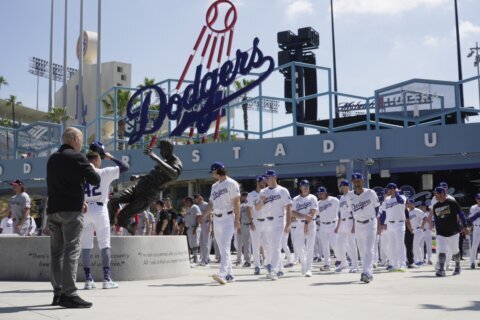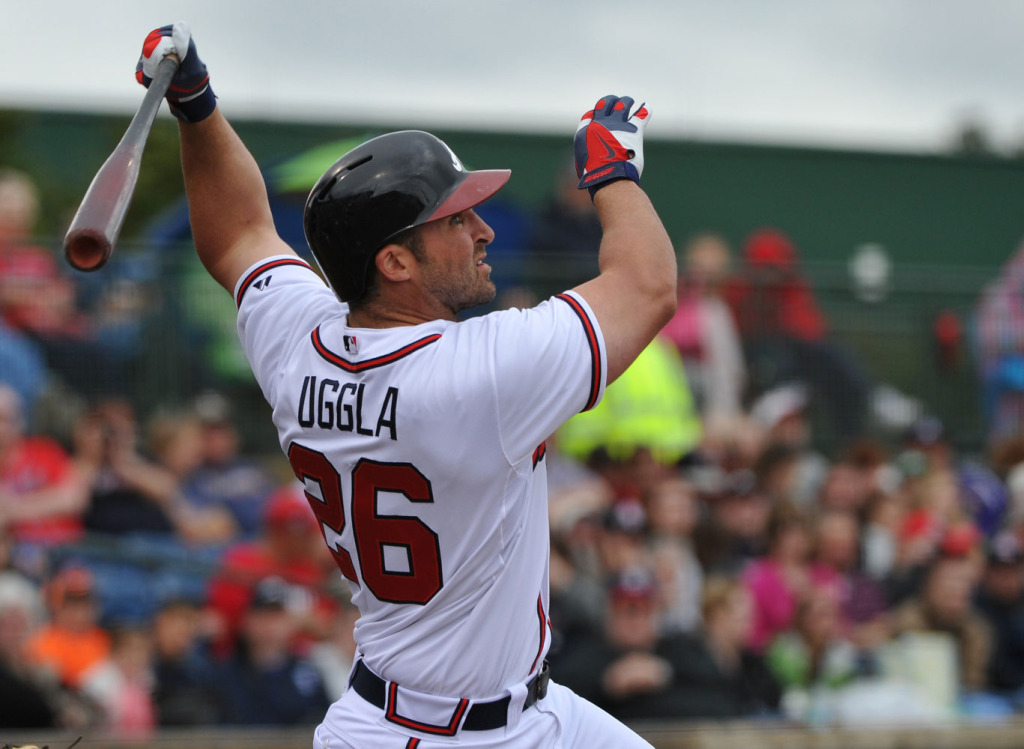
WASHINGTON – This is a fun time of year for those of us baseball geeks who like to get into every little detail of the offseason. The Washington Nationals announced their preliminary list of non-roster invitees Friday, including some familiar names and some others to keep an eye on as we look ahead toward spring.
Before breaking down the names, let’s revisit exactly what makes a minor league free agent non-roster invitee. This means a player that has been signed to a minor league contract with an invitation to Major League Spring Training. The players will get a locker in the big league clubhouse in Viera, Florida, and the team will have to make a determination at some point in camp whether or not to add them to the 40- and 25-man rosters. Depending on their veteran status, certain players may have opt-outs in their contracts, like Chris Young did in 2013.
NRIs are usually longshots to make the club, especially one as strong as the Nationals, but there has been recent precedent. Chad Tracy came into camp as an NRI in 2012 and ended up becoming Washington’s best bench player, earning a guaranteed contract for 2013. In 2013, left-handed pitcher Fernando Abad and righty Ross Ohlendorf both camp to camp as NRI and ended up contributing.
Here’s a look at the players who we know will be in camp and what they might contribute in 2015.
RHP Heath Bell
The Heath Bell experience comes to Viera. Bell made his name as the Padres closer, where he posted a five-year stretch with a 2.53 ERA, more than a strikeout per inning pitched (and nearly three for every walk) and allowed just 16 home runs in 374 innings, making three All-Star Teams.
But the past three seasons have been brutal, as his ERA has nearly doubled and he’s allowed 18 bombs in under 150 innings. His WHIP has been an abysmal 1.51 as he’s bounced from Miami to Arizona to Tampa Bay. The Nats hope they can find some of the magic that Bell used to flash. At age 37, it will be interesting to see if there’s anything left.
RHP Mitch Lively
After nearly eight full seasons in the Giants’ chain, including the last three at Triple-A, Lively finally got a fresh start with the Nationals in Syracuse at the end of last year. Once considered a valued prospect, the 6-foot-5 right-hander was converted from a reliever to a starter in 2013. While his strikeout rate dropped initially, he fanned nearly a batter per inning in his nine appearances (seven starts) with Syracuse. Lively’s final start of the season – in which he fanned 11 in just 6 innings of work – is encouraging.
RHP Scott McGregor
Release by the Cardinals midseason in 2014, McGregor was signed by the Nats and sent to Double-A Harrisburg where he was roughed up at first before settling in over his final four starts (2-0, 2.73 ERA, 17 K/2 BB) earning a promotion to Triple-A Syracuse. The right-hander turned in quality starts in three of his four outings with the Chiefs to earn his NRI this spring.
1B Clint Robinson
I had the chance to see Robinson up close in person in Triple-A back in 2010. In the final two games of a four-game set, he put on a clinic, going 6-for-9 with four doubles. My small, observed personal sample size only supports the statistics – Robinson can rake. In fact, he has hit so consistently (career .302/.381/.510 in the minors) throughout his career that it’s a wonder he hasn’t been given more of a shot. He’s never been a big power guy, only twice clearing 20 home runs, but he churned out 54 extra-base hits in under 500 plate appearances while slashing .312/.401/.534 at Triple-A Albuquerque last year.
Robinson would likely be amenable to a minor league assignment, but could even be a sleeper out of camp as a left-handed bat to fill out the bench. He’s identified as a first baseman, but can also fill a corner outfield spot in a pinch.
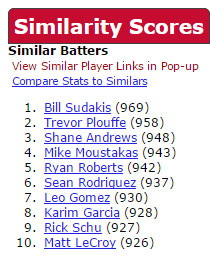 3B Ian Stewart
3B Ian Stewart
The good news for Nats fans is that Stewart’s Coors Field numbers (.243/.337/.430) aren’t astronomically higher than his career norms (.229/.315/.415). Unfortunately, neither are particularly compelling stat lines.
Bizarre random statistical fact: The ninth and 10th-ranked similarity scores among batters for Stewart are Nats hitting coach Rick Schu and Nats bullpen coach Matt LeCroy. It doesn’t mean anything. Or does it…?
2B Dan Uggla
The biggest news of the day was the signing of the one-time slugger Uggla. He is the only second baseman in MLB history with more than three 30-home run campaigns, turning the trick five times. However, the former Marlin and Brave (and, briefly, Giant), has been a minus defender most of his career and has seen his bat speed creep to a halt and his offensive production plummet the past two years.
Uggla has been worth -2.4 WAR since the beginning of 2013, easily the worst mark in baseball (nobody has been worth less than -2 wins). Once a three-time All-Star, he’ll turn 35 in Spring Training, not exactly the point in one’s career when a resurgence usually occurs. With Kevin Frandsen and Emmanuel Burriss (and possibly Stewart) providing depth at second base, it’s hard to imagine where Uggla fits in without a profound reversal of course.
Follow @WTOP and @WTOPSports on Twitter and WTOP on Facebook.

